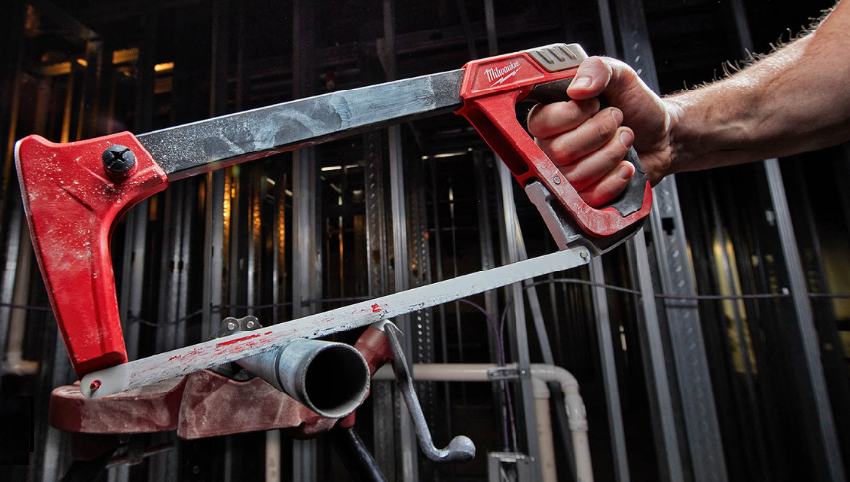Metal cutting is a common task in various industries and DIY projects. There are several tools available for this purpose, but one tool that often comes to mind is a hacksaw. In this article, we will explore whether a hacksaw can effectively cut metal and discuss its limitations and alternatives.
Introduction to Hacksaws
A hacksaw is a manual cutting tool that consists of a frame and a blade. The blade is attached to the frame, providing stability and control during cutting. Hacksaws are versatile tools and widely used for cutting various materials, including wood, plastic, and metal. If you’re looking to how to cut metal closet rod, a hacksaw can be a great option. Its sturdy frame and sharp blade make it an effective tool for cutting through metal. Just make sure to use the right blade for the job and take your time to ensure a clean cut.
The Cutting Ability of a Hacksaw
When it comes to cutting metal, a hacksaw can indeed get the job done. However, it is essential to consider the type and thickness of the metal being cut.
Metal Types
Hacksaws are suitable for cutting soft metals such as aluminum, copper, brass, and thin steel. These materials can be effectively cut using a standard hacksaw blade. However, for harder metals like stainless steel or hardened steel, a different cutting tool might be required.
Metal Thickness
The thickness of the metal also plays a significant role in determining whether a hacksaw can cut it effectively. Hacksaws are best suited for cutting metals up to 1/4 inch in thickness. Beyond that, the process becomes more challenging, and alternative cutting tools may be necessary.
Factors to Consider
While a hacksaw can cut metal, there are certain factors to keep in mind to ensure optimal results.
Blade Selection
Choosing the right blade is crucial for achieving clean and efficient cuts. Different types of hacksaw blades are available, each specifically designed for cutting different materials. For metal cutting, a blade with fine teeth is recommended to produce smoother cuts.
Blade Tension
Proper blade tension is essential for effective cutting. Too much tension can cause the blade to break, while insufficient tension leads to bending and reduced cutting efficiency. Regularly check and adjust the blade tension to maintain optimal performance.
Cutting Technique
Using the correct cutting technique can greatly improve the efficiency and precision of a hacksaw. Start the cut by applying light pressure, and gradually increase it as the blade engages with the metal. Maintain a steady pace and let the blade do the work. Applying excessive force can damage the blade and result in an uneven cut.
Limitations and Alternatives
While a hacksaw can cut certain metals effectively, it has its limitations.
Cutting Speed
Compared to power tools such as angle grinders or plasma cutters, a hacksaw operates at a much slower speed. Therefore, when dealing with a large metal piece or thicker materials, using a hacksaw can be time-consuming and impractical.
Precision
Hacksaws provide a decent level of precision, but they may not be suitable for intricate cuts or detailed work. If you require intricate cuts, consider using alternative tools such as a bandsaw or a reciprocating saw with a metal-cutting blade.
Efficiency
Cutting metal with a hacksaw requires physical effort and can be tiring, especially when dealing with thicker or harder metals. Power tools, on the other hand, offer increased efficiency and require less physical exertion.
In conclusion, a hacksaw can indeed cut metal, especially softer metals and thinner pieces. However, for harder metals or thicker materials, alternative cutting tools may be more effective and efficient. When using a hacksaw, it is essential to select the appropriate blade, maintain proper tension, and apply the correct cutting technique for optimal results.
FAQs
Q: Can a hacksaw cut through stainless steel?
A: While it is possible to cut stainless steel with a hacksaw, it is not the most efficient method. Stainless steel is a hard metal, and using a power tool such as an angle grinder or a reciprocating saw would be more suitable.
Q: What is the maximum thickness of metal that a hacksaw can cut?
A: Hacksaws are best suited for cutting metals up to 1/4 inch in thickness. Beyond that, using alternative cutting tools is recommended.
Q: Can I use a hacksaw to cut other materials besides metal?
A: Yes, a hacksaw can be used to cut various materials, including wood and plastic. However, it is crucial to use the appropriate blade for each material.
Q: How do I know when to replace the blade of my hacksaw?
A: Signs that indicate the need for a blade replacement include dull teeth, reduced cutting efficiency, or blade breakage. It is advisable to replace the blade when it shows significant signs of wear.
Q: Can a hacksaw create clean and precise cuts in metal?
A: Hacksaws can produce reasonably clean and precise cuts, but for intricate work or higher precision, alternative tools with specialized blades may be more suitable.





